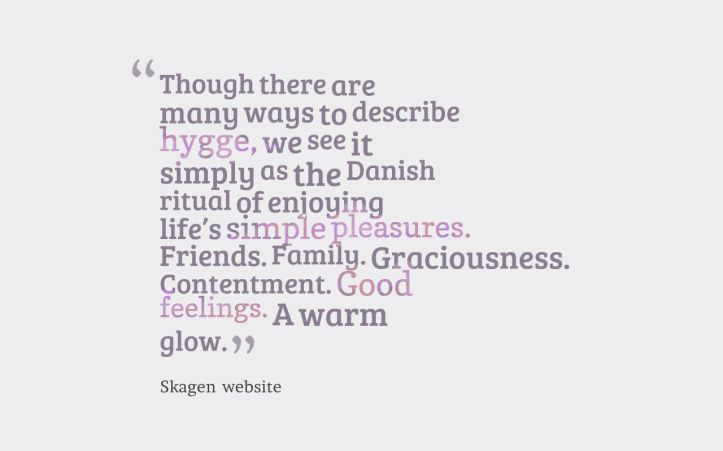It’s been called unpronounceable, untranslatable and under estimated as a measure of happiness. It’s definitely having a moment in publishing at the moment. During August and September 2016 there will be nine books or ebooks published all with the word Hygge in their title or subtitle. Prices range from 99p for a cobbled together bandwagon effort (seriously bad proof reading and lines that, I swear, were just lifted from better books) to £25.00 for Trine Hahnemann’s Scandinavian Comfort Food; Embracing the Art of Hygge, currently smiling at me from my Amazon Christmas Wishlist.
A quick Google search brings up 9,250,000 results for the word. That’s just the word, and goes from the official Visit Denmark piece on The Art of Hygge to pieces in both the Belfast newspaper, Belfast Live, (Could Embracing Hygge make Belfast A Happier Place) and the Irish Times (Everything you need to know about hygge; the Danish recipe for happiness) both published within 24 hours of each other last week.
So, what is it? How do you say it? And can it really never be translated?
Hygge is a Danish word borrowed from Norwegian, where it may be connected to the English word Hug. You say it sort of like Hoo-gah as long as the Hoo has a ‘hyoo’ sound about it like the u in pure. Its Norwegian origin comes from the word for think, although the nearest translation anybody links it to in English is ‘cosy’. It’s an amalgamation of thought and feeling and mindfulness and comfort and belonging that we could take a sentence to explain but, a bit like petrichor*, is easier to feel than to put into words.
Probably Meik Wiking (the coolest Danish name ever; who wouldn’t want to be a Wiking!) gets my vote for the best definition;
Hygge is about an atmosphere and an experience rather than about things. It is about being with the people we love. A feeling of home. A feeling that we are safe, that we are shielded from the world and allow ourselves to let our guard down. You may be having an endless conversation about the small or big things in life — or just be comfortable in each other’s silent company — or simply just be by yourself enjoying a cup of tea.**
And blogger Anna Lea West offers ‘cosiness of the soul’ as her translation.
As for translation; well, no. Not if you’re looking for a literal one word translation, same as there are no literal one word translations for the many words for snow the inuit need. But the emotions, the heart of hygge…. if I read it right…. well, that’s easy to translate and to feel without words. And it doesn’t take money, or the right kitchen, or the right clothes. It takes heart.
So my task for the year is to make my life more open to hygge. More open to having those moments when I sit, guinea pig on lap, cup of tea in hand, surrounded by those I love and think…. no, feel….. this, this is beautiful soul food.
*Petrichor is the earthy scent formed when rain falls on dry soil.
** From Meil Wiking’s book, The Little Book of Hygge, published on 6th September.
//ws-eu.amazon-adsystem.com/widgets/q?ServiceVersion=20070822&OneJS=1&Operation=GetAdHtml&MarketPlace=GB&source=ss&ref=as_ss_li_til&ad_type=product_link&tracking_id=angjemscitcot-21&marketplace=amazon®ion=GB&placement=0241283914&asins=0241283914&linkId=ab5a118e509c6e449c3fb030cb3698e2&show_border=true&link_opens_in_new_window=true

[…] other news: have you heard about hygge? It fits right in with the whole cocooning and simple pleasures thing I was talking about and I […]
LikeLike